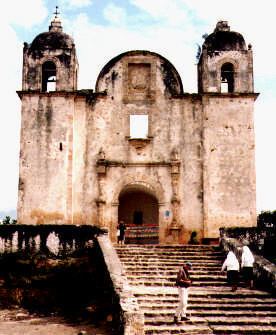Elevation 33 m (108 ft) Area 352.6 km² | INEGI Code 009 | |
 | ||
Time zone Central Standard Time (UTC-6) Major Airport Merida (Manuel Crescencio Rejón) International Airport | ||
Chikindzonot Municipality (In the Yucatec Maya Language: “cenote in the west”) is one of the 106 municipalities in the Mexican state of Yucatán containing (352.56 km2) of land and located roughly 170 km southeast of the city of Mérida.
Contents
- Map of Chikindzonot YucatC3A1n Mexico
- History
- Governance
- Communities
- Local festivals
- Tourist attractions
- References
Map of Chikindzonot, Yucat%C3%A1n, Mexico
History
It is unknown which chieftainship the area was under prior to the arrival of the Spanish. After the conquest the area became part of the encomienda system which lasted until the end of the colonial era. Yucatán declared its independence from the Spanish Crown in 1821 and in 1825, the area was assigned to the Valladolid region.
During the Caste War of Yucatán, the village was sacked by the rebel indigenous people and the 300 white inhabitants fled. Colonel Eulogio Rosado y Estevéz established a headquarters in 1848, 25 miles away in the town of Ichmul, to try to recover Chikindzonot. In 1849, Lt. Col. Pablo A. González y Osorio was able to retake the town, and thereafter it slowly repopulated.
It was designated as its own municipality in 1957.
Governance
The municipal president is elected for a three-year term. The town council has seven councilpersons, who serve as Secretary and councilors of public security, public sanitaion and monuments.
Communities
The head of the municipality is Chikindzonot, Yucatán. The other populated areas of the municipality include Chan-Chimilá, Chan Santa María e Ichmul; Chaxán, Ichmul, San Cristóbal, San José, Xarco, X-Campana, X-Kancabdzonot, Xkanteíl, Xoax Dzonot, Xpoxil, Yokdzonot Carrillo, and Yokdzonot Viejo. The significant populations are shown below:
Local festivals
Every year from the 1 to the 18 February the town holds a traditional village festival and in October, a celebration for its patron saint, St. Francis of Assisi.
